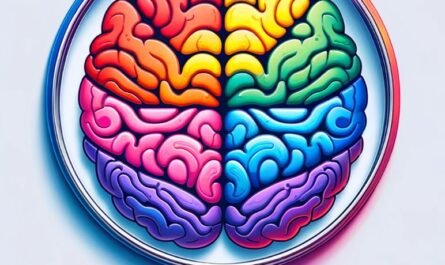Quackery: A Brief History of the Worst Ways to Cure Everything is one of the most interesting books I’ve read in a long time. Written by Lydia Kang, MD and Nate Pedersen, this takes us through some of the wackiest cures and treatments throughout history. The scariest part? Some of these treatments lasted for hundreds of years, were touted by respected philosophers and medical professionals, and often led to more deaths than cures.
As a mental health blog, my Quackery book review will center more around the mental health and wellness treatments in this book, but this is an exceptionally detailed book that goes into common treatments from hundreds or even thousands of years ago. Everything from syphilis and cancer to stuttering and epilepsy are touched on here. Is Quackery worth reading?
Read on and I’ll tell you a little bit about it.
- Pages: 343
- Reading Difficulty: Easy, most of the science and technical terms are explained for layman readers
- Recommend?: Definitely, a fun read with lots of information
Word of Warning
Do you get easily queasy or nauseous? Does reading about blood, vomit, or copious amounts of drool make you sick to your stomach? If so, then this book might be a little too much for you. Most early “medicines” were based around making the patient expel the sickness (or demons, depending on what we’re treating and who’s treating the concern).
As humans, we like when we feel something. A physical sensation. It lets us know that the thing is working. That’s why mint was added to toothpaste. It gives you a tingling sensation that, although maybe not more effective, feels more effective because we are feeling something. Speaking of which, have you ever read Power of Habit? They spoke about this a lot there and it’s also worth reading.
Back to Quackery, for the longest time we didn’t have bloodwork (aside from bloodletting), scans, imaging, or any other means of measuring whether something was effective. So, if a heavy metal is making you drool several quarts of fluid and you wanted to get the sickness out anyway, then that seems effective.
Going by this logic, many of the cures discussed here make sense.
Going by modern logic though, a lot of this is very gross. And unethical. And immoral, dangerous, fatal, you get the point.
So, if reading about our grossest bodily functions turned up to 11 doesn’t bother you, then Quackery is worth reading. If your stomach turns as easily as drinking wine from an antimony cup, then maybe you’ll want to skip Quackery.
Steel yourself (or mercury, antimony, any other metal you like) as I dive deeper into some of the horrifying mental health cures discussed in this book.
Baking Away Insanity
This is probably my favorite cure from this book. I couldn’t stop laughing when I read it. This comes from the Renaissance (you know, THE Renaissance, that enlightened time when everyone had the smartest ideas) and it was a unique way to cure insanity. I’d like to say it’s a half-brained idea, but then we wouldn’t be using enough ingredients.
During this time zootherapy was huge. It was thought that if you consumed an animal part that corresponded to your need (think monkey testicles for virility, which is another cure from this book), then you would be cured of your ailment. That being said, I have no idea why this was ever invented, but here we go.
Bake a whole loaf of bread. Remove the inner part of the bread. Shove an ox brain in there. Yes, a whole brain (what did I say earlier? It’s not half-brained). Bind the ox brian loaf to the insane person’s head. That’s it. Insanity cured.
Stone of Madness
Is an ox brain loaf not quite cutting it? How about a much less humorous treatment for mental illness. This idea first started in ancient Greece where they correctly theorized that the brain is the seat of emotion and thought. So, what do we do about mental illness? Well, brain surgery might help. There were experiments here and there, but nothing too much.
That is, until we get to the Renaissance (once again, great with art, not so much with medicine). A grand theory emerged that perhaps all this time there has been a stone in our brain. The Stone of Madness. If only we could extract that stone (you know where this is going), then we could cure all forms of mental ailments!
Now if this sounds a lot like a lobotomy, then you’d be right. It wasn’t long until someone tried out this theory on those with psychotic delusions and hallucinations. It started as removing spoonfuls (yes, as in several) of brain and was “refined” to only snipping a small connection. Nonetheless, it was this thought that eventually led to that most terrifying form of brain surgery.
Too Much Blood?
Bloodletting has had a long history dating back before the Han Dynasty. Doctors like Benjamin Rush (founding father and lover of “heroic depletion therapy,” or vomiting/drooling/bleeding all your fluids out) thought that one of best ways to deal with mental ailments like mania, frenzy, and melancholy would be to bleed until the problems pass.
A common prescription for mania would consist of removing 20-40 ounces of blood, or around 2.5 pints. That leaves plenty, right? You’ll be fine (sidenote, no you won’t be fine if you try this). Now it’s true that you won’t have enough energy to be manic after losing this much blood. You’ll also be close to death.
Wacky Cures for Depression
Depression is one of the leading mental health concerns of our era. While we understand depression better now than we did before, even today our grasp on it is thin at times. Some of the cures thought up decades or centuries ago were just plain crazy (sorry to use the term, but you’ll agree after reading these cures yourself).
Morphine
Morphine was thought to be the curer of all ailments way back when. Sure it treats pain (if you don’t mind acquiring a severe addiction), but it was also used for rabies, snake bites, diabetes, and of course, depression. Sure, you can’t be depressed if you’re high on morphine, but the trip down isn’t going to be fun. Now you’re addicted to morphine and depression. Problem solved?
Obviously we don’t do this anymore and I hope I don’t have to say why. Morphine is best used for pain and even then just sparingly.
Wine
Well, it’s less addictive than morphine at least. Unfortunately, too many people even now turn to wine and other alcohols for self-medication with depression and anxiety. The ancient Romans believed wine to be a de facto panacea and used it to treat nearly everything for a time, depression included. While alcohol might feel like it helps depressive symptoms, it leads to more problems and now you need your depression and alcoholism treated (which, by the way, is even harder than it sounds, so just skip the self-medicating).
Enemas
We still have some people today who believe this today, but none of them (at least, hopefully none of them) are in a doctor’s office or counselor’s chair. While Quakery didn’t go too far into why this “cured” depression, the leading theory is that the human body sometimes isn’t so good at getting the waste out. The buildup of bacteria supposedly leads to all sorts of viruses that affect your mind and mood.
While enemas are still used today for constipation, they don’t do anything for depression. It is true that those with depression get constipation more often, but there’s no evidence that enemas do anything to cure depression.
Kidney Tacking
It was the 1800s and every health problem was blamed on misplaced organs. The most slippery organ of them all? The kidney of course! According to 1800s science, all our abdominal organs could get lost and cause all sorts of ailments. Depression is just one of them. This could also use headaches, abdominal pain, or even homicidality.
So, what do we do? Tack the kidney in place of course. Removing kidneys was killing too many patients, so old-timey surgeons decided to go with plan B. Known as nephropexy, your kidney would be tacked in place with some sutures, gauze, and the occasional rubber band. Thankfully this fell out of favor by the 1920s (you know, only about 100 years after it was being done).
Let’s Not Forget Addictions
Don’t worry, there are plenty of wacky addiction cures found in Quackery. Some of these have some logic (albeit very flawed logic) while others make no sense at all. Let’s look at a few addiction cures used throughout the years.
Antimony for Alcoholics
Antimony is a silver-colored metal and doesn’t look very unique. However, what you don’t know is that ingesting it causes vomiting, especially when it reacts to the acids naturally found in wine. There are plenty of cups made from antimony that would make alcoholics vomiting profusely after ingesting a glass. However, since vomiting was also a cure for a host of other problems, sometimes this was a sought after side effect.
We do have something similar today with Antabuse. This makes you vomit after drinking alcohol. It has been shown to be somewhat effective (if the person actually takes Antabuse, the main reason for it not working). The main difference is that you won’t have to worry about losing your life with Antabuse because antimony is potentially toxic.
Gold Injections
Not feeling it with antimony? What about a gold injection? Thanks to Dr. Leslie Keeley we can say that gold injections were once used to treat alcoholism. He boasted a 95% cure rate with his patented gold injection (don’t worry, he charged patients so much that there had to be gold in there).
Patients would get several injections a day. While Dr. Keeley never told the world his secret formula, a few stolen samples showed only trace amounts of gold were ever used in his injections.
Blistering and Opioid Addiction
Here’s the last thing we need for today’s opioid epidemic, blistering treatments. It was thought that blisters were the gateway to health for many conditions. It seems to logically make sense. The disease can rise to the surface through the blister and run out of your body. This was while the humour theory reigned supreme, so it just made sense back then.
Acids, boiling water, boiling oil, it was all used to make these “healing” blisters. For some reason blister therapy was also used for opioid addiction. Sound painful? Oh it gets worse. The blisters were intentionally kept open with a knife or other object to ensure that more fluid came out, so don’t expect that blister to heal in just a few days.
Final Thoughts
Should you read Quackery? Yes! This was a fantastic book and I am only describing a fraction of the wacky cures and treatments found here. My Quackery review gives it two thumbs way up. Get this book today and see all the weird treatments, medicines, and cures we used throughout history. I can’t wait to see a followup book years from now that criticizes all our current treatments. Medicine and therapy are all works in progress and books like this definitely prove it.





